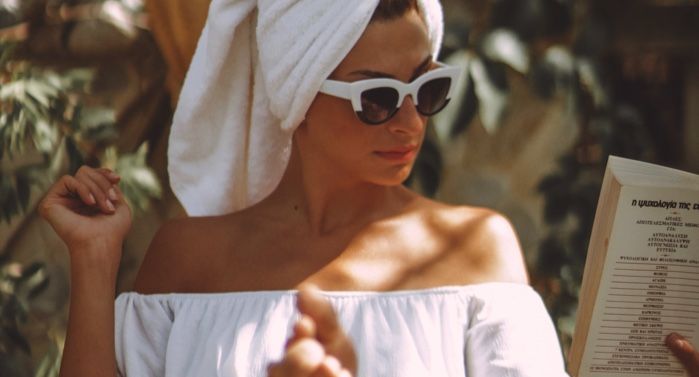
Where Would Fiction Be Without Women?
In the Western world, everything is gendered. This should hardly be news to anyone, but it might be less obvious or at the forefront of the brains of those who identify within heteronormative boundaries. I grew up being shamed for liking “chick flicks,” mostly because I was a boy, and we all know what elementary school-age boys (at least back then) called each other for liking such things. But I wasn’t the only one being shamed for liking things aimed towards women. Turns out anything remotely feminine is grounds for shame, even if you’re a woman.
Which, as Alanis Morissette might say, is ironic, isn’t it? Considering women account for something like 80% of fiction novel sales. In an age where (straight) men allegedly think about the Roman Empire every day, women are the ones who are buying the majority of fiction books on the market, regardless of whether they’re even marketed towards women.
Even in the 2020s, women reading novels in public are considered dangerous people with targets on their backs. Indeed, when was the last time you saw a woman, either in fiction or real life, reading in public without generating some sort of unwanted attention? We haven’t really progressed much past the narrative of Mrs. Brown in Michael Cunningham’s The Hours, who checks herself into a hotel room so she might just have a few hours to herself to read a book alone.
“There is something about the female bookworm, face obscured by a novel, hidden within plain sight, possibly pondering the bigger questions of life, possibly [fantasizing], that can serve as an affront,” wrote Johanna Thomas-Corr in The Guardian in 2019. “The onus has long been on women to facilitate easy human relations, and lone reading is an occupation that is not compatible with the social self.” Even in the modern day, reading a book of fiction is perceived by most heteropatriarchal cultures as frivolous and unnecessary (read: feminine), unlike manly pastimes like…sports?
Many 21st-century women have embraced this frivolous label and flipped it on its head, with “women who read are dangerous” literary merch almost becoming millennial chic. But even if such merch is consumed ironically, modern literature remains as strictly gendered now as it was in the 19th century. As a result, men who do read fiction are more likely to gravitate towards those written by men, yet another symptom of toxic masculinity that supposedly dictates fiction written by women is girly.
But the point is, the modern fiction novel wouldn’t exist or be sustained without girly books. Dating back to the 18th century, novels of fiction were marketed towards upper-class women who didn’t have the privilege of a complete formal education. Thus, works of “substance,” like nonfiction books of science, were reserved for the men who could understand them, and fiction novels were for the frilly, feminine ladies who weren’t smart enough to read the “good stuff.”
In our current digital era, it’s often middle-aged women’s book clubs that actively disclude men who are the trendsetters for most modern fiction, aided even more in recent decades by the advent of celebrity book clubs like Oprah or Reese’s Book Club, among many others. Look at Robert James Waller’s The Bridges of Madison County: dismissed by male critics as literary sludge, after being selected for Oprah’s Book Club (composed mainly of middle-aged women), it sold 60 million copies and was adapted into a largely successful film starring well-respected actors like Clint Eastwood and Meryl Streep.
Regardless of whether you see novels like Bridges containing genuine literary merit, the numbers speak for themselves: literature, like all forms of media, depends on sales. If women are the ones driving fiction book sales for better and for worse, what’s the “real” literature here? Sapiens or Twilight? Still, culturally speaking, male-centric literature is still better respected in male-dominated media. As Roxane Gay put it, “Male writers get treated as intellectuals, women writers get treated as friends.”
Which, for female authors fighting for their place within the heteropatriarchy, can be frustrating and demeaning. But I’d also argue that men and women typically read literature differently: men remember what a book might have taught them, and women remember how a book made them feel. Generally speaking, women are more likely to be in better touch with their emotions, which tends to make for a better reading experience and, dare I say it, better readers.
In conversations of gendered media, I’m always curious to posit where queer people fall in the discussion. By these standards of modern fiction, I most certainly read more like a woman. But as someone who got to know his grandmother better by picking up the books she read and bonding over the shared experience, who learned to better understand themselves and their queerness by watching and reading the female-centric work previously enjoyed by his mother and aunts, I have benefitted largely by dipping my toes outside of heteronormative boundaries. So, to any straight men in the audience, go pick up a girly book if it piques your interest. Remember how it might make you feel, and maybe you’ll be better for it.








